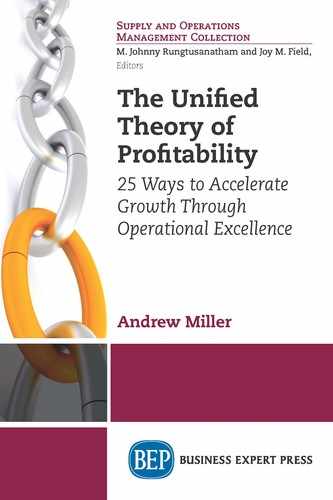Before we talk about prioritization and executing better on your priorities, we need to ensure that you give yourself and your organization the best chance to succeed. That starts with knowing your ideal future state. Without knowing your ideal future state, you cannot prioritize because you do not know what you are trying to accomplish. In Chapter 9, you started to articulate your ideal future state.
Finding that ideal future state comes down to sitting down as a leadership team or the CEO or President or senior executive of your organization or your business unit or your department and thinking about where you want to be. If we are sitting together 6 or 12 months from now, what does success look like? What does the future bring? Where are you as an organization? What do you want to accomplish? Your ideal future state paints a picture, where you want to get to.
Your vision of the ideal future state needs to be fairly short term. There is no point in making a vision 5 years down the road because you have no idea what the industry is going to look like. You have no idea what your company is going to look like. You have no idea what your customers are going to look like. So make it realistic.
The first question to answer in order to effectively prioritize is, “What is our ideal future state?” This sets the foundation for every decision you make.
Now it is time to identify your one priority. What is the most important priority for your organization? Write in on the line below.
Are you struggling to find just one priority? If so, then you are like most executives and business owners. However, you need to have that one priority, because if you have too many priorities, then you have none.
To help you identify your one priority, consider this question, “What is the quickest and most effective way for me to achieve my ideal future state?” See why it is important to know your ideal future state. Without it, you cannot identify your one priority, which means you cannot prioritize.
My Personal Example
Let me give you a couple of examples to make this real. We will start with me. I am obviously a consultant. I am an expert in operational excellence and work with clients all over the world to help them accelerate growth and find money where they do not normally look. Is that my ideal future state? No, that is what I offer. My ideal future state is helping innovative, exciting, and interesting companies all across the world. That answers the first question.
Then I need to determine, “What is the quickest and most effective way for me to achieve my ideal future state?” I answer the question this way—to raise my profile as a global expert in operational excellence. That is my one priority. Everything I do should be helping to raise my profile as a global expert in operational excellence so I can work with innovative, exciting, and interesting organizations.
If I decide next week that I want to do a teleconference or I decide next month that I want to do a workshop, I must always go back and ask myself if it helps raise my profile as a global expert in operational excellence. If the answer is yes, then I should go ahead and do it. If the answer is no, then I should not. That is figuring out your one priority.
Client Examples
One of the things that my clients tell me almost more often than anything else is that I help them cut through the noise. That I help them realize that things they thought were priorities actually were not.
I recently worked with a client whose executive team had spent well over a million dollars’ worth of time and effort discussing an issue that was only going to save them $15,000 to $20,000 a year. All because they did not have their priority figured out. Their one priority was to grow the business, but they were spending endless hours in meetings discussing how to cut costs (and a tiny amount at that). They just needed someone to keep reminding them what was important to the sustainability of the business and take them out of the day-to-day problem solving.
Think about that in the context of your own organization. How much time do you spend talking about things that are immaterial to your organization’s ultimate success? It all comes down to prioritization—to asking yourself, “Is what we are discussing going to help us achieve our ideal future state?”
Another client I recently worked with was losing customers at a rate of about 5 percent each year. This is a global organization that has a tremendous reputation and has been around forever. So why were customers leaving? Because my client was trying to be everything to everybody. They had forgotten who their ideal customer was. They stopped trying to meet the needs of the new customers they needed to attract. So what did we do? We identified four key customer segments that provided the fastest and largest opportunity for growth. Then we ensured that all of the strategies we employed, all of the communications we sent out, and all of the marketing plans that we developed would be focused on those four key customer segments.
To summarize, here are the two most important questions when discussing your priorities:
1. What is my organization’s ideal future state?
2. What is the quickest and most effective way to achieve that ideal future state?
Think about those two questions before moving on to Chapter 15.
Now try the previous exercise again. What is the most important priority for your organization?
